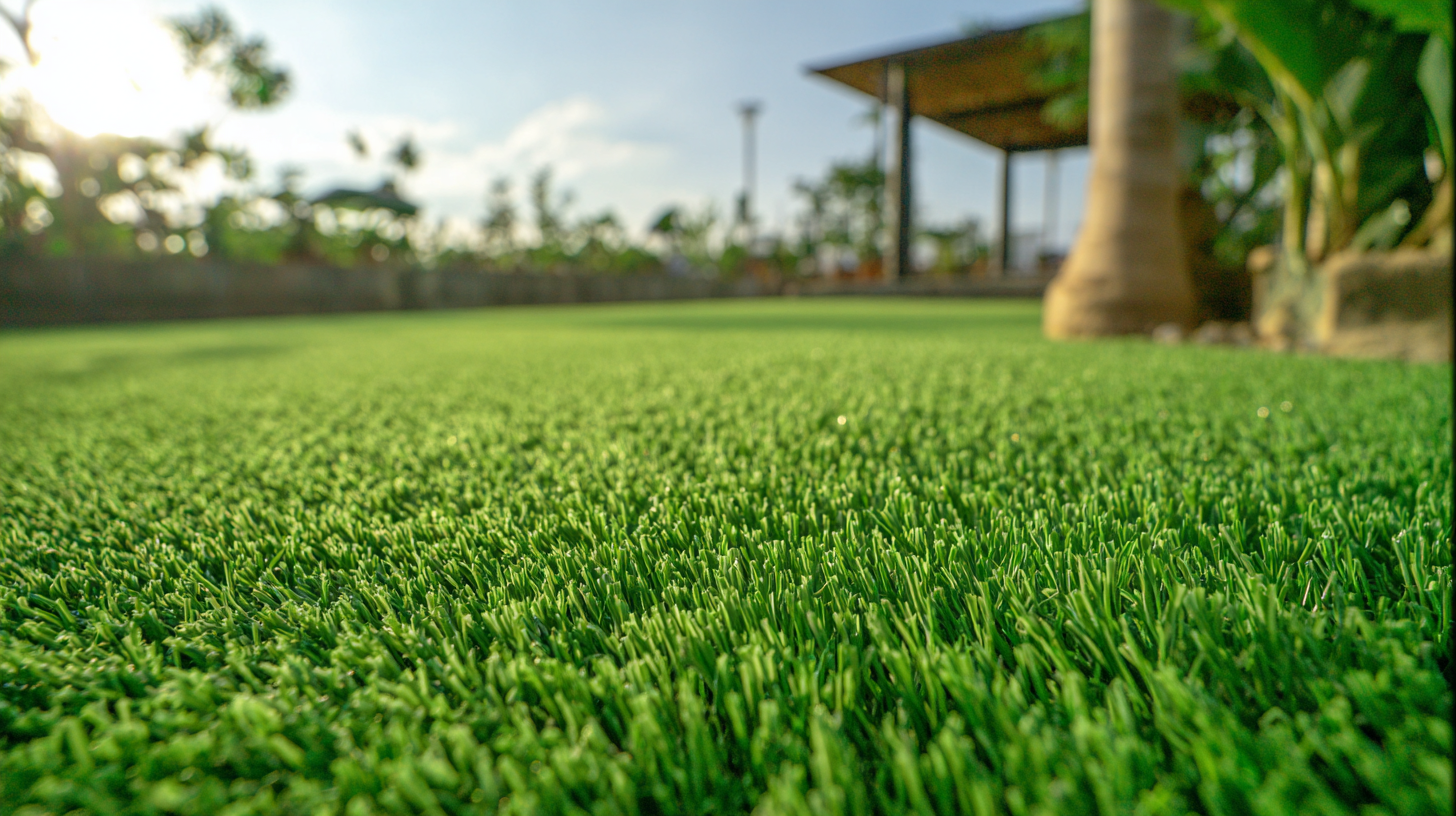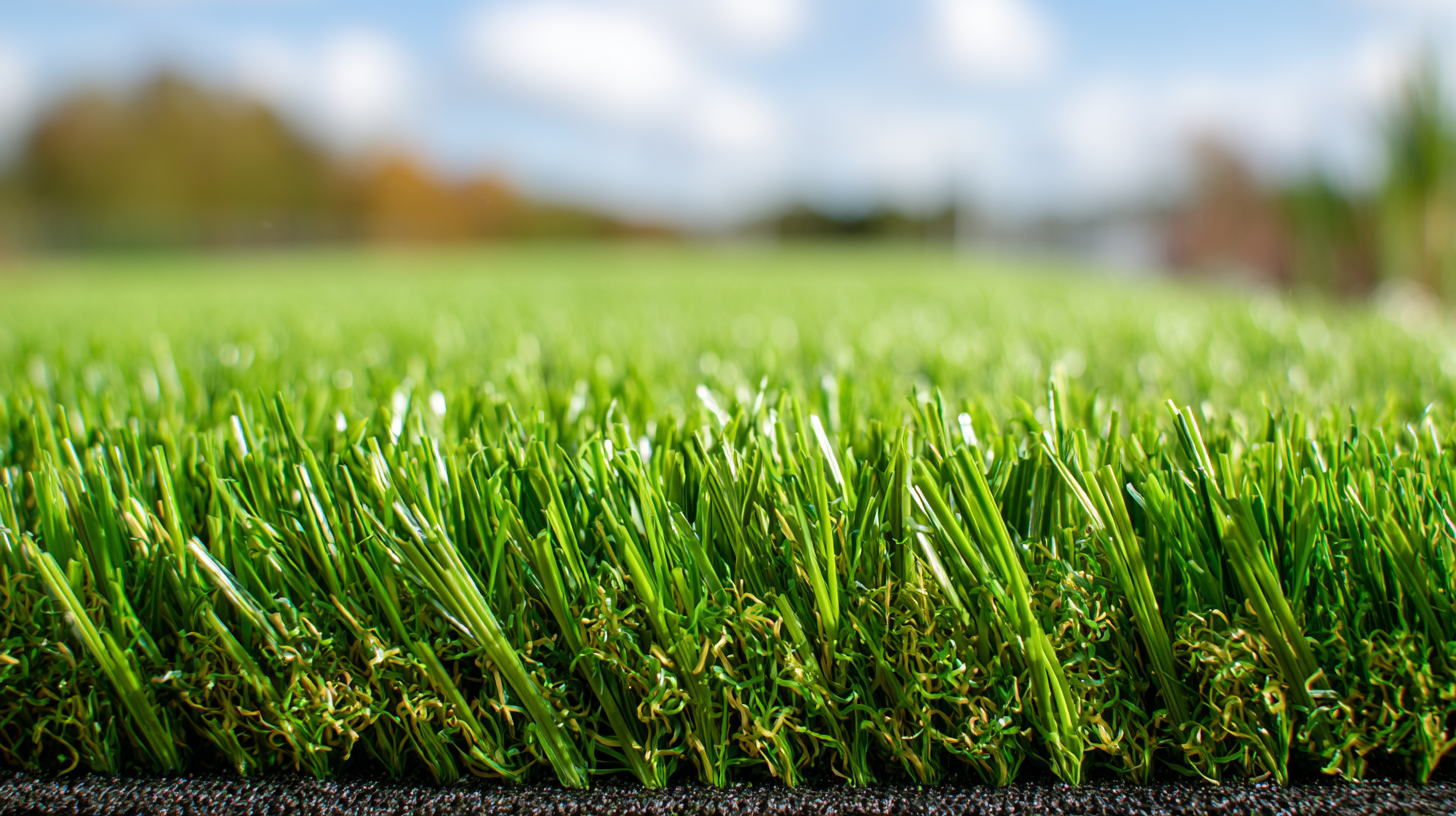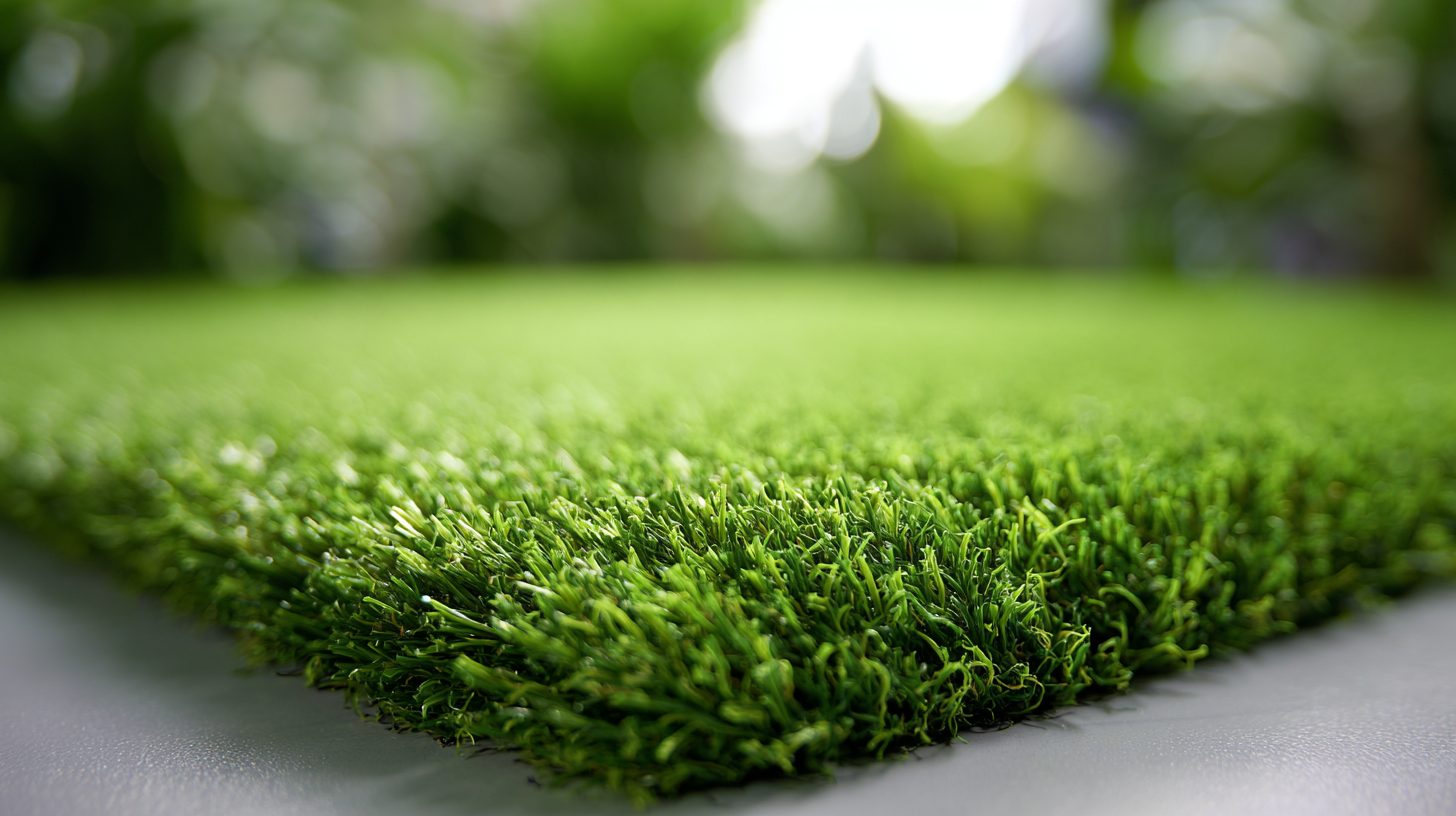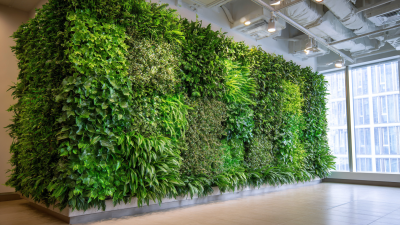In recent years, the demand for Artificial Green Grass has surged, as businesses increasingly seek sustainable and aesthetically pleasing alternatives to natural lawns. According to a report by Grand View Research, the global artificial turf market is expected to reach USD 5 billion by 2025, growing at a compound annual growth rate (CAGR) of 15.5%. This significant growth is driven by the rising adoption of synthetic grass in various sectors, including sports, landscaping, and residential areas. Businesses are not only looking for durable and low-maintenance solutions but also environmentally friendly options to reduce water consumption and pesticide use. As the market becomes flooded with options, understanding how to choose the best Artificial Green Grass suited to your specific business needs is crucial. In this ultimate guide, we will explore the essential factors to consider, helping you make informed decisions that align with your operational goals and environmental responsibilities.

Artificial green grass has become a popular choice for businesses seeking low-maintenance landscaping solutions. One of the main benefits of artificial turf is its ability to maintain a lush, green appearance year-round, regardless of weather conditions. This can enhance curb appeal, attracting more customers and creating a welcoming atmosphere. Furthermore, businesses can save on water costs and reduce the need for harmful pesticides and fertilizers, contributing to a more eco-friendly operation.
However, some experts argue against artificial turf, emphasizing the importance of sustainable landscaping practices. A professional landscaper advocates for natural lawns, highlighting their ecological benefits, such as supporting local biodiversity and improving air quality. Natural grass lawns can also sequester carbon, helping fight climate change. While artificial grass offers immediate aesthetic benefits, it may not contribute to the long-term sustainability goals that many businesses are setting today. Choosing between artificial and natural grass involves weighing short-term benefits against the importance of environmental stewardship in modern business practices.
When selecting the best artificial green grass for your business needs, several key factors should be taken into account to ensure optimal performance and longevity. The type of materials used, such as polyethylene (PE) and polypropylene (PP), significantly influences the durability and aesthetic appeal of the turf. Recent market reports indicate that the PE and PP artificial turf market was valued at $360 million in 2022 and is projected to reach $580 million by 2030, showcasing a compound annual growth rate (CAGR) of 6.1% from 2024 to 2030. This growth reflects a rising demand for high-quality synthetic grass that can withstand various environmental conditions.
When making your selection, consider the infill options and the pile height of the grass. Higher pile heights can mimic the look of natural grass more closely, while the right infill can enhance the overall durability and performance.
Tips: Always assess the intended use of the turf—be it for sports, landscaping, or playgrounds—as this will dictate material choice and specifications. Additionally, look for grass products that come with warranties, which can be a testament to their quality and the manufacturer's confidence in their longevity.
When it comes to selecting the best artificial green grass for commercial use, understanding the different types available is crucial for making an informed decision. One popular option is polyethylene (PE) grass, known for its durability and realistic appearance, making it ideal for high-traffic areas. Another excellent choice is polypropylene (PP) grass, which is often more affordable and suitable for applications where foot traffic is lighter. Each type caters to different aesthetic and functional needs, ensuring businesses can find the perfect match for their landscaping projects.
With the increasing demand for artificial grass, the market for maintenance equipment like turf brooms and zero-turn mowers is also on the rise. The artificial grass broom market is projected to grow significantly, driven by the expansion of green spaces in commercial settings. Similarly, zero-turn mowers, which enhance the efficiency of grass maintenance, are expected to see a rise in demand. As both the artificial grass and maintenance equipment markets experience strong growth, businesses must stay informed about the choices available to them to optimize their landscaping solutions.

When considering artificial green grass for your business, budgeting effectively is crucial to obtaining the best value without compromising on quality. According to a recent industry report from Grand View Research, the global artificial turf market is projected to reach $5.6 billion by 2025, with a compound annual growth rate (CAGR) of 16.3%. This rapid growth reflects an increasing demand for cost-effective landscaping solutions that require minimal maintenance and water resources. Business owners should assess their specific needs and explore options that fit their budget while providing durability and aesthetic appeal.
Investing in artificial grass can result in significant long-term savings. The Synthetic Turf Council notes that traditional lawns can cost up to $2,000 annually for maintenance, irrigation, and mowing. In contrast, artificial grass reduces these costs drastically, with an estimated lifespan of 15-20 years and little to no maintenance required. Businesses can expect to recoup their initial investment within just a few years, allowing for more funds to be allocated toward other critical areas. By carefully evaluating pricing, sourcing high-quality products, and considering installation expenses, companies can maximize their return on investment while enhancing their outdoor spaces.

When it comes to maintaining artificial grass, regular upkeep is essential to keep it looking vibrant and appealing. One important maintenance tip is to periodically brush the grass with a stiff bristle broom. This helps to lift the fibers and restore their upright position, giving the turf a more natural appearance. Additionally, using a leaf blower or a rake can help clear away debris such as leaves and twigs, preventing buildup that can lead to discoloration or stains over time.
Watering artificial grass is another crucial aspect of maintenance. While it doesn’t require as much water as natural grass, occasional rinsing can help remove dust and dirt that may accumulate. This is particularly important in areas with heavy foot traffic, as it helps to keep the fibers resilient and well-aerated. Furthermore, applying infill materials, such as silica sand or rubber granules, can enhance drainage and keep the grass looking full.
By following these maintenance tips, you can ensure that your artificial grass remains an attractive and functional feature for your business for years to come.












